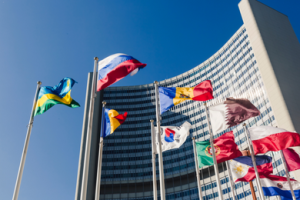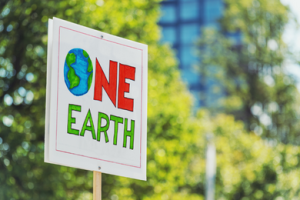If you work on topics related to science, technology, or academia, you have probably heard (or know a lot) about the Sustainable Development Goals and the 2030 Agenda for Sustainable Development. However, if you do not know much about it, let’s dig a bit deeper.

In 2012, the United Nations members gathered at the Rio+20 conference to discuss what would the next step be for the world after the deadline to achieve the Millennium Development Goals (which was 2015). This was an initiative with eight goals, focused on addressing the most pressing issues that the world was experiencing at that moment, ranging from extreme poverty, environmental degradation, and the spread of AIDS/HIV to the lack of proper education for millions of kids.
In Rio+20, the global leaders decided to carry the momentum that the MDGs generated and created a much more specific plan to achieve sustainable development by the year 2030. In 2014 the UN General Assembly Open Working Group (OWG) proposed a document containing 17 goals, and it was the start of, what today, we know as the Sustainable Development Goals – SDGs (which you can check in detail here).
This brings us to the discussion of One Health and the SDGs. Which, yes, instinctively you might think that it could be nested, or be heavily associated, just with the SDG3: Good Health and Well-Being. But is it?
Here at the One Health Center, we like to constantly remind everyone about the One Health definition, which was recently updated by the OHHLEP (we have a mini-series of blog posts on it, that you can check here, here, and here). The official definition says:
One Health is an integrated, unifying approach that aims to sustainably balance and optimize the health of people, animals, and ecosystems. It recognizes the health of humans, domestic and wild animals, plants, and the wider environment (including ecosystems) are closely linked and interdependent.

The approach mobilizes multiple sectors, disciplines and communities at varying levels of society to work together to foster well-being and tackle threats to health and ecosystems, while addressing the collective need for clean water, energy and air, safe and nutritious food, taking action on climate change, and contributing to sustainable development.
So, we can see that One Health is much more than just human health. Something that we were able to experience closely with the COVID pandemic (which started from a zoonotic spillover) that has been shaking our whole way of living for the past two years, and that only quite recently, we started to see the beginning of its end.
We must start thinking about One Health as a reinforcement of the Sustainable Development Goals purposes and start to introduce (human, animal, and ecosystem) health in all dimensions of development. It is time for all of us to realize that we exist in a very complex macrosystem of interconnected microsystems, and that the effects of a big enough disturbance can easily drag, mutate, and be felt (and often amplified) throughout the whole system.
This is why we are starting a series of very interesting blog posts written by our researchers and staff, talking from expert points of view, about how can each one of the SDGs relate to One Health, and how they work together.
We will post on our social media weekly when a new blog post is up, you can also subscribe to our newsletter here to know more about all of what we are doing.
See you in the next one!
By: Alejandro Sanchez MDP | Guest Writer
 1
1
